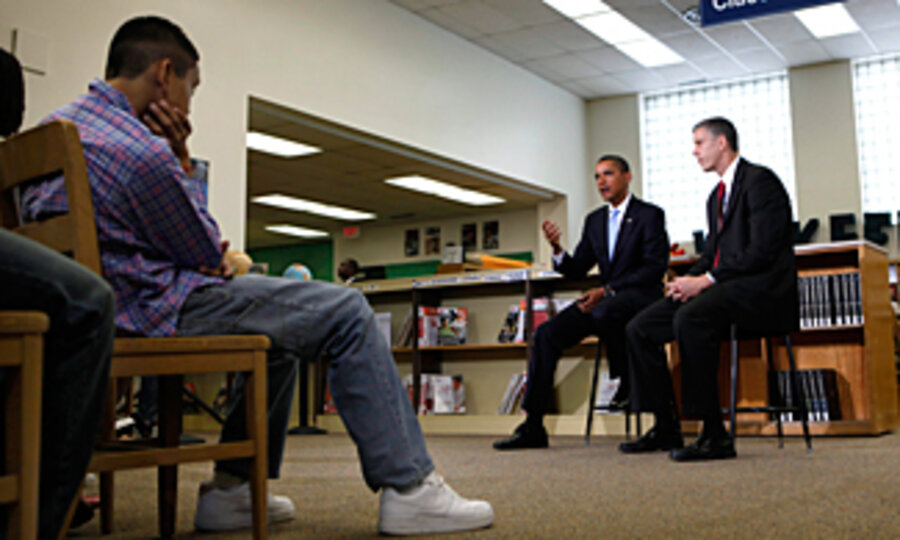Eyeing stimulus money for education, states adopt reforms
Loading...
| Chicago
The federal stimulus money for education is prompting states, much more than before, to embrace reforms promoted by the US Department of Education. In particular, states are moving to better track students' progress and to use rigorous assessment tests.
These conclusions are drawn from a new study by the Center on Education Policy (CEP) in Washington. The report sizes up the impact so far of the $100 billion in stimulus money that has started going to education.
These funds include the $5 billion in Race to the Top grants, which will be awarded in a competition. States haven't even applied for this money yet, but the grants already appear to be a key factor in states deciding to make changes.
In short, the stimulus dollars, in a time of economic challenges, mean that the federal government is poised to play a far greater role in driving education reforms.
"There's some congruence in what the states have [already] been doing and what the federal government wants," says Jack Jennings, CEP president. "But it certainly focuses attention. Without a doubt, the federal government is having an impact." In part as a result of the stimulus money, he adds, "the states and the federal government now seem to have a common reform agenda for education."
The Department of Education has outlined four priority areas for states receiving stimulus money, with particularly stringent requirements for those applying for a Race to the Top grant:•Establishing data systems that track students' progress from preschool through college. •Developing and using rigorous standards and assessments.•Improving teacher effectiveness and the distribution of high-quality teachers.•Turning around the lowest-performing schools.
The most progress has been made in the first two areas, the study found. In particular, nearly every state that responded to the CEP survey said it was already implementing all possible data-system reforms or was considering such reforms. Also, 33 states out of the 42 responding said that they were considering adopting the common core standards currently being developed by states. (Two said they would not adopt the standards, and seven were undecided.)
The priorities around teachers and school turnarounds seem to be getting less action, says Mr. Jennings, perhaps because they involve more players and are often undertaken at the district level. They're also more nebulous.
"We don't even have agreement on what makes an effective teacher," Jennings says. "And I don't think we know how to systematically improve poorly performing schools."
This is one reason that some education experts are taking issue with the priorities laid out by the federal government.
Grover "Russ" Whitehurst, director of the Brown Center on Education Policy and a senior fellow at the Brookings Institution in Washington, would like to see more emphasis on instruction and curriculum. The push to encourage states to adopt the common core standards accomplishes little if it's not accompanied by other reforms, he says.
"Simply having the standards is like gassing up your car to take a trip somewhere: The fuel is in the engine, but the trip may or may not be successful," he says. It's not surprising, Mr. Whitehurst says, that so many states are planning to adopt the standards in hopes of getting needed stimulus money. But, he wonders, will some change their plans if their bids for Race to the Top grants are unsuccessful?
One interesting detail emerging from the study is just how many states are planning to apply for the Race to the Top, despite the stringent requirements and the fact that only a select number of states are likely to be awarded money. Forty-one states that took part in the study said they planned to apply, and four are undecided.
"The Department of Education doesn't want to give every state a grant, but they also want to have an impact," says Jennings. "It's going to be a difficult balancing act for them."
-----
Follow us on Twitter.





